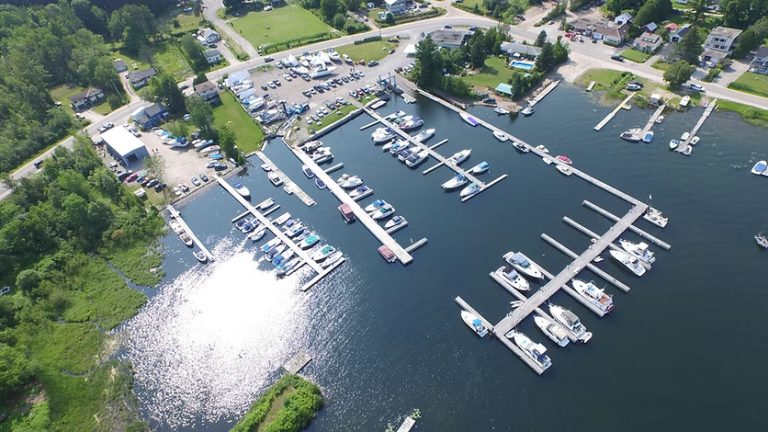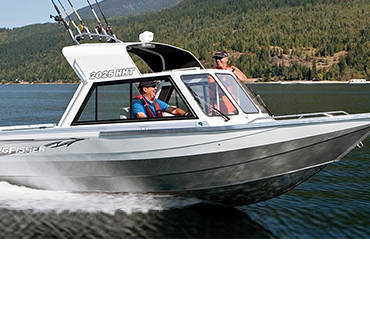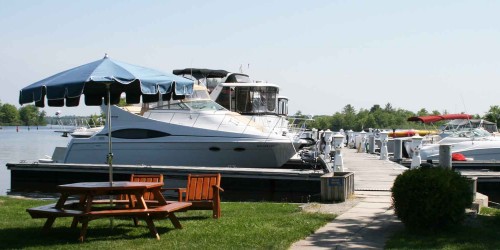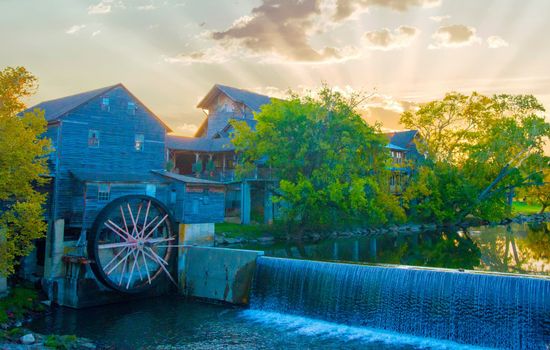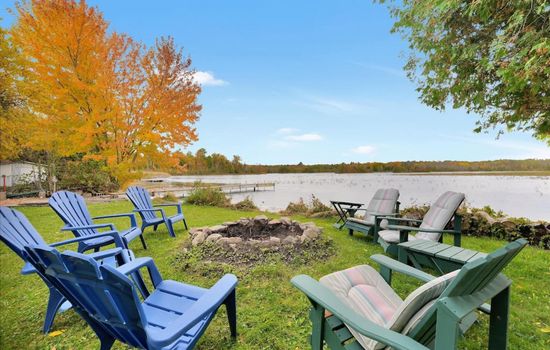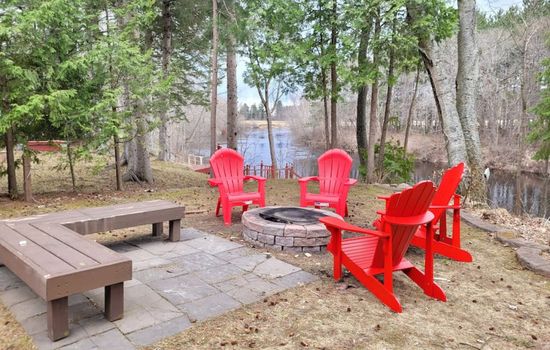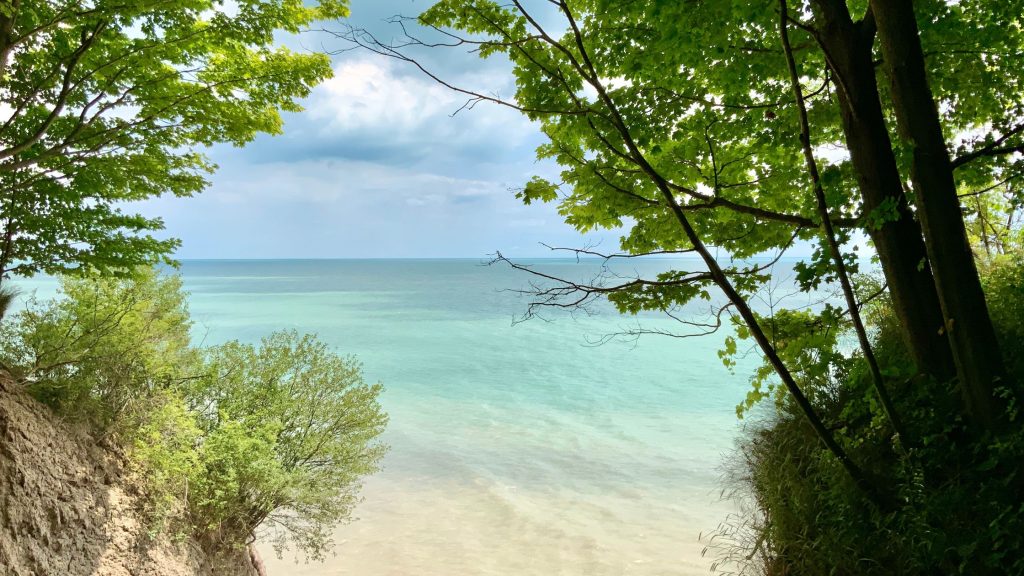Information not accurate?
Help us improve by making a suggestion.
Graceful and vast, with a shoreline longer than any other Great Lake, Lake Huron offers a captivating mix of wild beauty and charming lakeside escapes. Stretching between Ontario and Michigan, it’s where unspoiled beaches meet historic lighthouses, and island life blends effortlessly with forested trails and summer festivals.
On the Canadian side, the lakefront towns of Wasaga Beach and Grand Bend are beloved summer destinations. Wasaga, home to the world’s longest freshwater beach, is a vibrant haven of soft sands, boardwalks, and beach bars buzzing with energy. Just down the coast, Grand Bend draws a more upscale crowd, with art galleries, waterfront patios, and a popular marina anchoring its scene. A short drive inland leads to Pinery Provincial Park, a protected sanctuary of rolling dunes, Carolinian forest, and sunset-lit beaches ideal for campers, hikers, and paddlers.
Further north, Manitoulin Island—the largest freshwater island in the world—is Lake Huron’s spiritual and scenic crown jewel. With its mix of Indigenous culture, hiking trails, and the transparent waters of Providence Bay and Cup and Saucer Trail, Manitoulin invites travelers to slow down and connect deeply with the land and lake.
Across the water in the United States, Michigan’s Huron shoreline is a quieter counterpart to the west. Towns like Port Austin, Tawas, and Alpena are known for their lighthouses, fossil beaches, and relaxed marinas. The Thunder Bay National Marine Sanctuary in Alpena offers glass-bottom boat tours and shipwreck dives that reveal a haunting and fascinating underwater museum.
Why Lake Huron? Because it delivers something rarer than perfect water and endless horizon—it offers authenticity. From kayaking the cliffs of Turnip Rock, to exploring island coves by sailboat, or lounging on soft, sun-warmed beaches with a cone from a roadside creamery, Lake Huron is where nature, history, and small-town charm harmonize in a way that feels utterly timeless.
- Surface area (km)
- 59590
- Max depth (m)
- 229
- Elevation (m)
- 176
- Shoreline length (km)
- 6164
Ideal for
- Family friendly:
- Pet friendly:
- Romantic getaways:
Popular activities
- Boating
- Waterskiing
- Wakeboarding
- Kayaking
- Canoeing
- Swimming
- Fishing
- Hiking
- Bay Fishing
- Fly Fishing
- Freshwater Fishing
- Ice Skating
- Jet Skiing
- Cross-country Skiing
Islands
Manitoulin Island, which is the largest freshwater island in the world and is located in Lake Huron, Ontario, Canada. Manitoulin Island has a rich history, with evidence of human habitation dating back over 10,000 years. It was originally inhabited by Indigenous peoples, including the Ojibwe and Odawa tribes. The island was later explored by European settlers and became a significant site for fur trading and missionary activities. Today, Manitoulin Island is known for its natural beauty, including forests, lakes, and waterfalls, and is a popular destination for outdoor enthusiasts and cultural tourists.
Nearby amenities
Nestled on the picturesque shores of Lake Huron, Grand Bend, Ontario, beckons travelers with its vibrant atmosphere and stunning natural beauty. As you explore this charming town, be sure to stop by the Grand Bend Marina, a hub for boating and thrilling water activities. Here, the spirit of adventure flourishes as visitors embark on kayaking, paddleboarding, or simply enjoy the breathtaking views of the lake.
For those intrigued by history and culture, a visit to the nearby Huron County Museum in Goderich is essential. This treasure trove showcases the rich narratives and heritage of the region, providing enlightening insight into the lives and stories of its past inhabitants.
If you’re an outdoor enthusiast, you’ll find delight in the natural wonders of Pinery Provincial Park. With its extensive hiking trails, inviting beaches, and serene camping sites, it offers the perfect escape into nature. After a day of exploration, unwind at the renowned Grand Bend Beach, a favorite among locals and tourists alike, where you can bask in the sun or take a refreshing dip in the lake.
As you stroll along the lively main street of Grand Bend, you’ll discover an array of delightful shops and eateries waiting to be explored. Don’t miss the Dark Horse Estate Winery, where you can indulge in exquisite wine tastings and tours that highlight the local flavors. For those who prefer a lighter pace, golf enthusiasts will revel in the manicured greens of Chippewa Golf & Country Club or the scenic Oakwood Resort Golf Course.
With its diverse attractions and spirited ambiance, Grand Bend serves as a captivating destination that promises unforgettable memories on your Lake Huron getaway.
Information not accurate?
Help us improve by making a suggestion.
Marinas on Lake Huron
Where to stay
Frequently Asked Questions
Ready to dive into what Lake Huron has to offer? Let’s tackle some of the burning questions you might have as you plan your visit!
-
Yes, Lake Huron is generally very safe for swimming, especially at supervised public beaches. The water quality is excellent in many areas, particularly along the Canadian coast and around Manitoulin Island. As with any lake, always check local beach advisories and watch for rip current warnings, especially after storms.
-
Ontario’s Lake Huron shoreline offers an unbeatable mix of long sandy beaches, charming beach towns, and natural beauty. Destinations like Wasaga Beach, Grand Bend, and Pinery Provincial Park attract families, sunseekers, and nature lovers alike. Add in the cultural richness of Manitoulin Island and the crystal-clear waters of Tobermory, and it’s no wonder Lake Huron is a summer favorite.
-
Wasaga Beach is one of the best family-friendly beaches on Lake Huron. With its shallow entry, lifeguard supervision, soft sand, and nearby amenities like playgrounds, picnic areas, and ice cream stands, it’s an ideal spot for kids to swim and play safely.
-
Pinery Provincial Park in Ontario is home to some of the most impressive sand dunes along Lake Huron. These towering, rolling dunes overlook the lake and are surrounded by rare Oak Savanna ecosystems. Boardwalks and trails provide access without damaging the delicate landscape, making it perfect for exploration and sunset viewing.
-
Absolutely. Lake Huron’s expansive open waters and reliable breezes make it a haven for sailing and windsurfing. Popular launch points include Grand Bend, Bayfield, and Tawas Bay in Michigan. The lake hosts sailing regattas and wind sports events throughout the summer, with marinas and sailing clubs ready to welcome newcomers and seasoned sailors alike.
-
Lake Huron is considered one of the cleanest Great Lakes thanks to its relatively low population density along the shoreline, fewer industrial centers, and strong conservation efforts in both the U.S. and Canada. The northern and central areas in particular benefit from protected parklands, minimal agricultural runoff, and pristine natural watersheds that help maintain its clarity and purity.



